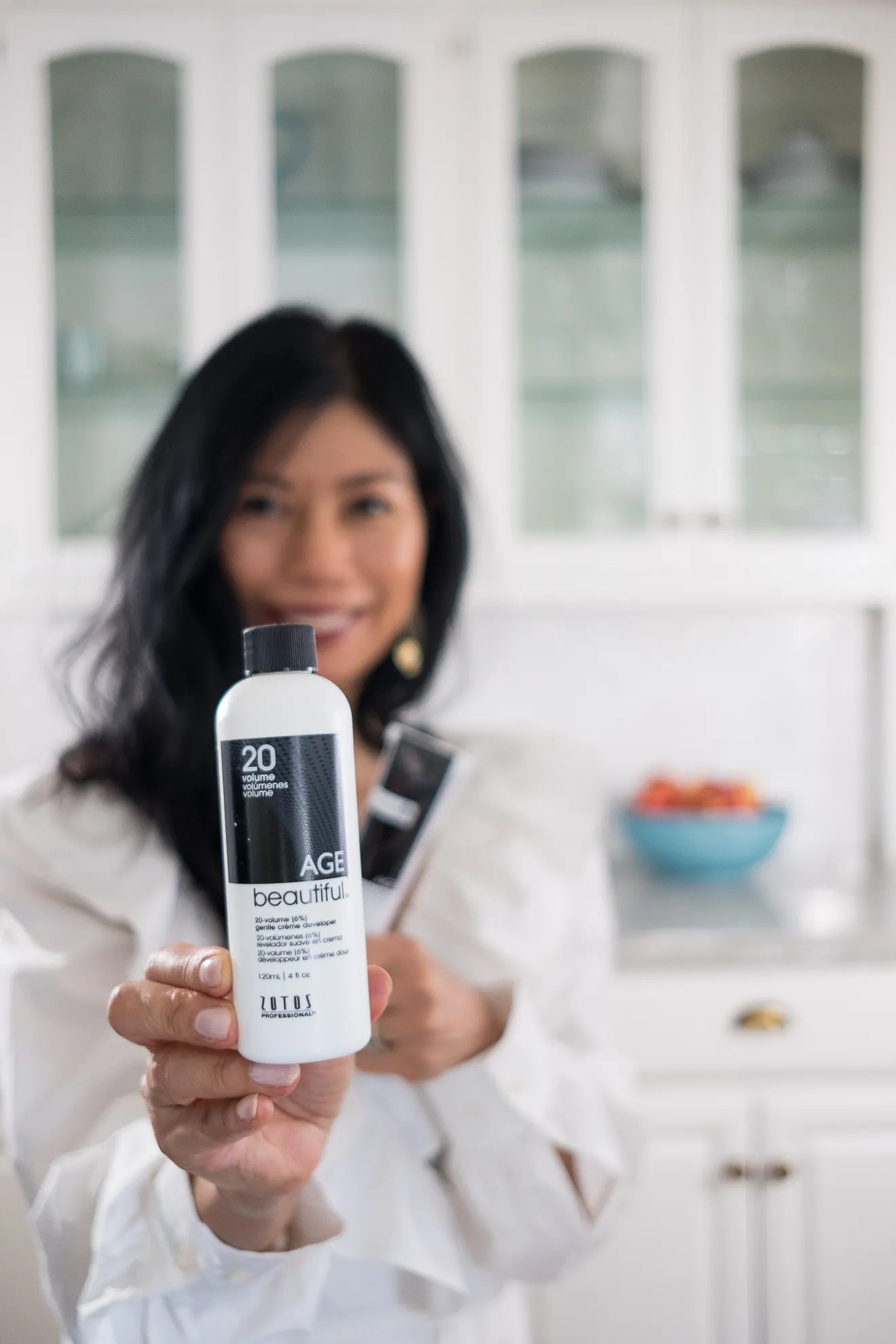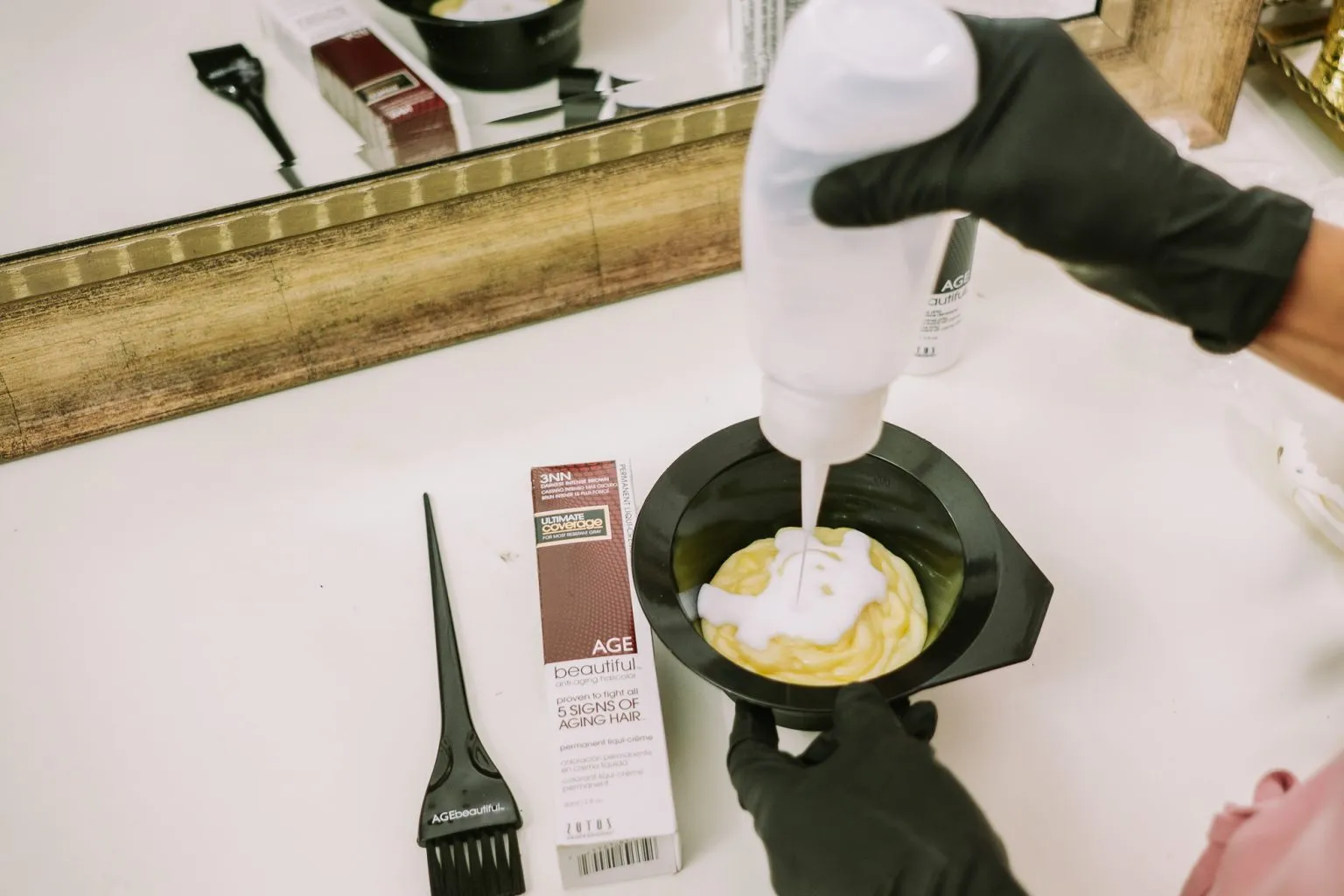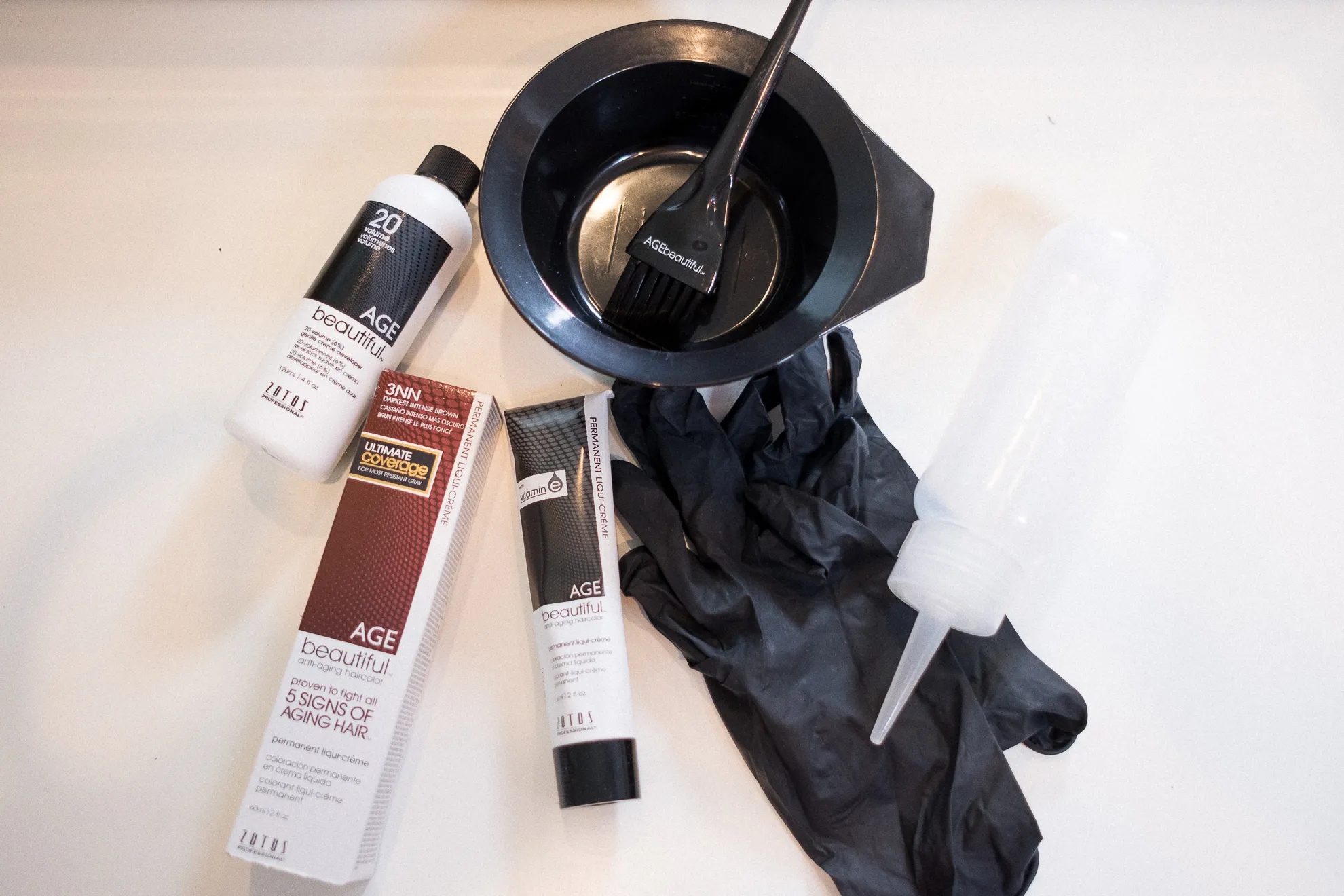Mixing hair color can be an exciting yet daunting task! It’s like being an artist, where your hair becomes the canvas. With the right knowledge and a little practice, you can achieve fantastic results from the comfort of your home. Many people turn to online tutorials, such as those on Dailymotion, to learn the ins and outs of mixing hair color and developer. In this section, we’ll explore why mastering this skill can elevate your hair game.
Understanding Hair Color and Developer

To get started with hair color mixing, it's essential to understand what hair color and developer are. Let's break it down:
- Hair Color: Hair color comes in various forms, including permanent, semi-permanent, and temporary. Each type has different longevity and effects on your hair. Permanent colors penetrate the hair shaft, providing long-lasting results, while semi-permanent colors coat the hair, fading over time.
- Developer: Developer is a crucial component in the hair coloring process. It's a hydrogen peroxide-based solution that helps lift the hair cuticle, allowing the color to penetrate. Developers come in different volumes, typically 10, 20, 30, and 40, which determine the level of lift or lightening.
Mixing the right ratio of hair color to developer is critical for achieving your desired shade. Here's a quick reference table:
| Developer Volume | Purpose | Mixing Ratio |
|---|---|---|
| 10 Volume | Deposit color only | 1:1 |
| 20 Volume | Lift 1-2 levels | 1:1 |
| 30 Volume | Lift 2-3 levels | 1:2 |
| 40 Volume | Lift up to 4 levels | 1:2 |
When mixing, always follow the manufacturer's instructions for the best results. Happy mixing!
Also Read This: A Comprehensive Guide to Getting Paid on Shutterstock
Choosing the Right Developer Strength

When it comes to achieving the perfect hair color, selecting the right developer strength is crucial. The developer, usually made of hydrogen peroxide, activates the hair color and determines how light or dark the final shade will be. Here’s a quick rundown to help you make the best choice:
- 10 Volume Developer: Ideal for depositing color without lifting, this is perfect if you're just looking to enhance your natural shade or cover gray hair.
- 20 Volume Developer: This is the most commonly used strength. It lifts hair color by one to two levels, making it suitable for semi-permanent dyes and for minor color changes.
- 30 Volume Developer: If you're looking to lift your base color by two to three levels, this developer is your go-to. It's great for more intense color changes, but be cautious as it can be damaging if used excessively.
- 40 Volume Developer: This is the strongest option, lifting hair by up to four levels. Use it sparingly, as it can significantly damage hair and is best for professional use.
To determine which developer strength to use, consider your current hair color, the desired end result, and the health of your hair. Always conduct a strand test to avoid any surprises!
Also Read This: How Much Can You Earn from 200K Views on YouTube?
Step-by-Step Guide to Mixing Hair Color

Mixing hair color with developer may seem daunting, but it's a straightforward process. Follow these steps for a successful color mix:
- Gather Your Materials: You’ll need your hair dye, the appropriate developer, a mixing bowl, a dye brush, gloves, and an applicator bottle.
- Read the Instructions: Always refer to the product instructions. Different brands may have specific mixing ratios.
- Prepare the Mixture: Generally, the ratio is 1:1 for most creams; mix equal parts of hair dye and developer in the bowl. For example, if you use 2 ounces of dye, mix it with 2 ounces of developer.
- Mix Thoroughly: Use your brush to blend the mixture until it's smooth and uniform. Ensure no streaks remain for an even application.
- Do a Strand Test: Before applying the mixture to your entire head, test a small section of hair to see how the color develops and ensure there are no allergic reactions.
- Application: Once satisfied with your strand test, apply the mixture to your hair using the dye brush. Start from the roots and work your way to the tips.
By following these steps, mixing hair color and developer can become an easy and enjoyable part of your hair transformation journey!
Also Read This: Write Comprehensive White Papers with Canva White Paper Template
Tips for a Successful Hair Color Application

Coloring your hair at home can be a fun adventure, but it’s essential to follow some tips for a successful application. Here are a few pointers to ensure you achieve that gorgeous look you desire:
- Choose the Right Shade: Before you start, pick a hair color that complements your skin tone. Consider consulting a color wheel or using online tools to visualize how different shades will look on you.
- Perform a Patch Test: Always conduct a patch test 48 hours before the application to check for any allergic reactions. Just apply a small amount of dye on your inner elbow and wait.
- Gather Your Supplies: Have everything ready—gloves, clips, a mixing bowl, applicator brush, and an old towel. This preparation will make the process smoother.
- Divide Your Hair: Sectioning your hair into four parts can make application easier. Use clips to secure each section and ensure even coverage.
- Follow the Instructions: Every hair dye has specific instructions. Don’t skip any steps, and be mindful of the timing to avoid over-processing.
- Apply Generously: Ensure even distribution of color. Start from the roots and work your way down to the tips, using the applicator brush or your fingers (with gloves) for better control.
- Rinse Thoroughly: After the processing time, rinse your hair with lukewarm water until the water runs clear. Follow up with conditioner to lock in moisture.
Also Read This: How to Change Your Location on Behance
Finding Dailymotion Tutorials for Visual Guidance
Sometimes, reading about hair coloring isn’t enough. Visual guidance can tremendously enhance your understanding and execution. Dailymotion is a treasure trove of video tutorials that can help you through each step. Here’s how to find the best ones:
- Search with Specific Keywords: Use terms like “hair color application tutorial” or “mixing hair dye and developer” in the Dailymotion search bar. This specificity will yield more relevant results.
- Filter by Popularity: Once you have the search results, consider filtering them by popularity or most recent uploads. Popular videos often indicate helpful content.
- Check User Ratings: Pay attention to likes and comments. A highly-rated tutorial can save you a lot of time and frustration.
- Follow Hair Experts: Look for tutorials from professional hairstylists or reputable beauty influencers. Their expertise can guide you through techniques and tips you might not find elsewhere.
- Create a Playlist: Save your favorite tutorials in a playlist for easy access. This way, you can refer to them while you work on your hair.
By following these tips and utilizing Dailymotion’s resources, you’re setting yourself up for a fantastic hair coloring experience. Enjoy the process and embrace the change!
Also Read This: How to Obtain a License for Getty Images Content
7. Common Mistakes to Avoid When Mixing Hair Color
Mixing hair color can be a fun and creative process, but it’s easy to make some common mistakes that can lead to unsatisfactory results. Here’s a rundown of pitfalls to watch out for:
- Not Reading Instructions: Every hair color brand has specific mixing ratios and instructions. Ignoring these can lead to uneven color or damage. Always ensure you read the label!
- Using the Wrong Developer: Developers come in different volumes (10, 20, 30, 40). Using a developer that’s too strong can cause hair damage, while one that’s too weak won’t lift color effectively.
- Mixing Different Brands: Each brand has unique formulas, and mixing them can lead to unpredictable results. Stick to one brand for both the color and developer.
- Forgetting to Perform a Patch Test: Always perform a patch test on a small section of hair to check for allergic reactions or unexpected results.
- Not Considering Hair Condition: If your hair is damaged or overly processed, it might react differently to color. Consider a deep conditioning treatment before coloring.
- Ignoring Timing: Leaving the color on for too long can damage your hair, while not leaving it long enough can result in a lackluster color. Timing is crucial!
By being aware of these common mistakes, you can enhance your hair coloring experience and achieve the vibrant results you desire. Remember, a little preparation goes a long way!
8. Conclusion and Final Thoughts
Mixing hair color can seem daunting at first, but with the right knowledge and tools, it can become an enjoyable part of your beauty routine. By following tutorials on platforms like Dailymotion, you can gain valuable insights and tips from experienced professionals.
Always remember:
- Preparation is key—gather your materials and read the instructions carefully.
- Don’t rush the process; give yourself time to mix properly and apply the color evenly.
- Have fun experimenting with shades and techniques, but stay mindful of your hair’s health.
In conclusion, mixing hair color is an art that requires practice, patience, and a bit of experimentation. Embrace the journey, learn from mistakes, and enjoy the beautiful transformation that awaits you!